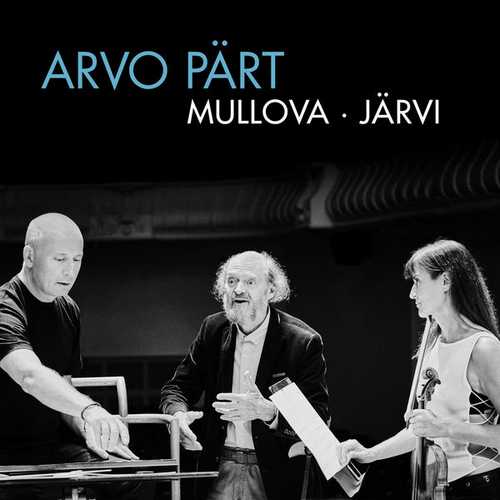
Composer: Arvo Pärt
Performer: Viktoria Mullova, Liam Dunachie, Florian Donderer
Orchestra: Estonian National Symphony Orchestra
Conductor: Paavo Järvi
Format: FLAC (tracks)
Label: Onyx
Release: 2018
Size: 587 MB
Recovery: +3%
Scan: yes
01. Darf ich… for violin, bells & strings
02. Fratres
03. Passacaglia
Tabula Rasa
04. I. Ludus
05. II. Silentium
06. Spiegel im Spiegel
The works on Viktoria Mullova’s new album devoted to Arvo Pärt’s music for violin stem from the composers study of medieval church music, and are products of what Arvo Pärt himself describes as a ‘tintinnabuli’ style, developed by the composer in the 1970s through studying medieval church music ‘I have discovered that it is enough when a single note is beautifully played. This one note, or a silent beat, or a moment of silence, comforts me. I work with very few elements – with one voice, two voices. I build with primitive materials – with the triad, with one specific tonality. The three notes of a triad are like bells and that is why I call it tintinnabulation.’
They have become some of the most iconic pieces in the contemporary repertoire and have reached out way beyond the usual ‘classical’ music world in their popularity. This album was recorded in the presence of the composer.
Nearly all the pieces on this album were first performed and widely promoted by the Latvian violinist Gidon Kremer, one of them — Tabula rasa (1977) — being specifically written with his artistry in mind. They are also all products of what Arvo Pärt himself describes as a ‘tintinnabuli’ style, developed by the composer in the 1970s through studying medieval church music. As Pärt has explained: “I have discovered that it is enough when a single note is beautifully played. This one note, or a silent beat, or a moment of silence, comforts me. I work with very few elements – with one voice, two voices. I build with primitive materials – with the triad, with one specific tonality. The three notes of a triad are like bells and that is why I call it tintinnabulation.” Tabula rasa and Fratres, both composed in 1977, effectively established Pärt’s international reputation. Tabula rasa is effectively a concerto for two violins with string orchestra and a prepared piano, the latter instrument creating explicitly bell-like sonorities in the work’s slow second movement. Fratres, since its first performance by the Estonian ensemble of early music, Hortus Musicus, has been arranged for various instrumental combinations. The version heard here is the composer’s own, written in 1991 for solo violin, strings and percussion (involving claves and bass drum or tom-tom). Bach has long been an important influence in Pärt’s music, as is evident in his Passacaglia, composed in 2003, and in Darf ich… (May I…) originally composed in 1995 and dedicated to Yehudi Menuhin; Pärt subsequently revised the work in 1999, Kremer giving the premiere of this revised version with his ensemble, Kremerata Baltica. Spiegel im Spiegel, composed in 1978, is one of Pärt’s simplest compositions, a violin unhurriedly playing a mostly stepwise melody over a steadily arpeggiating piano part.